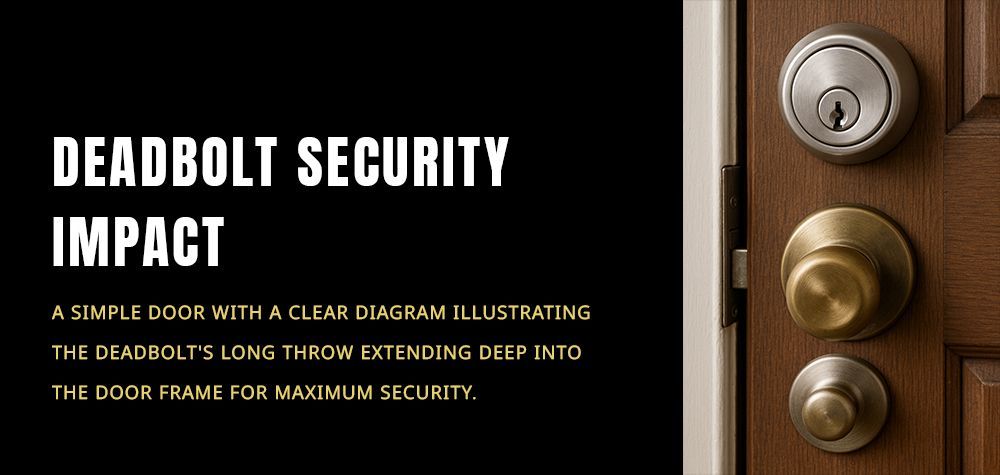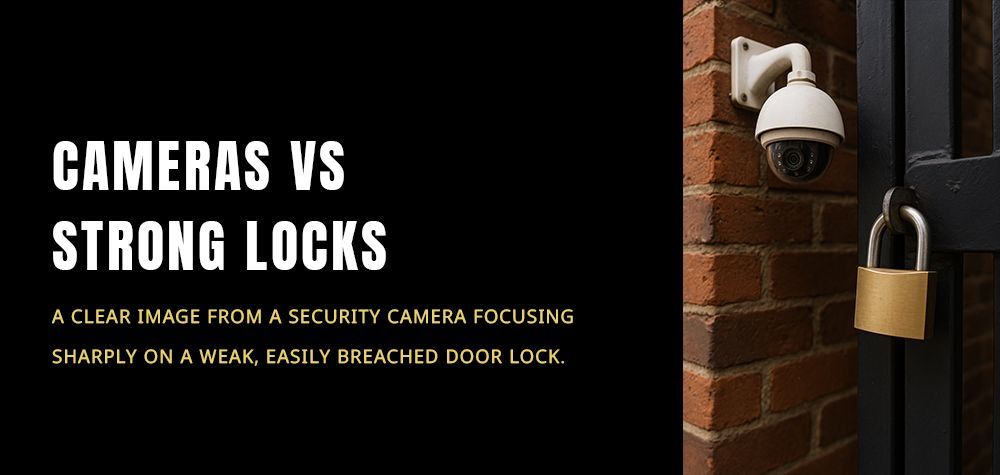How to diagnose car lock actuator vs. switch problems
We’ve all been there—you press the lock button on your key fob or inside the car, expecting the satisfying “click” of all your doors locking in unison. But instead, silence. Or worse, just one lonely door obeys while the others stay stubbornly open. At first, you might think it’s a fluke. But when it keeps happening, you’re forced to ask: is the door lock actuator failing, or is it the switch?
Understanding which part is at fault can save you time, money, and a whole lot of frustration. Let’s break down the difference between these two common culprits and walk through how to diagnose the issue like a pro—even if you’re not one. For professional services, reach out to us!
Can a locksmith fix a jammed car trunk latch?
Understanding the Door Lock System: Actuator vs. Switch
To figure out what’s going wrong, it helps to know what’s supposed to go right.
Your car's power lock system consists mainly of two players: the door lock actuator and the lock/unlock switch. The actuator is a small motor that physically moves the lock mechanism when it receives a signal. Think of it as the muscle. The switch, on the other hand, is the brain—it tells the actuator what to do. It could be a physical button inside your car or part of your remote key fob.
If either part fails, your lock won’t operate properly. But they fail in different ways, and those differences are your clues.
Common Symptoms of a Faulty Lock Actuator
1. You Hear the Motor, But the Lock Doesn’t Budge
One of the most common signs that your lock actuator is on its way out is when you press the lock or unlock button and hear a faint whirring sound, but nothing actually happens. The motor is still trying to do its job—it’s not completely dead—but the mechanism it controls has either become weak or disconnected. This could be due to wear and tear inside the actuator or a broken gear. It’s like the system is saying, “I’m trying, but I just can’t.” If the sound continues without movement, the actuator may need replacement.
2. The Lock Moves Slowly or Only Partially Engages
Another subtle but telling sign of a failing actuator is when the lock only moves halfway or very slowly. This sluggish behavior is often overlooked until it worsens. At first, you might think it's just a fluke, but over time, that half-hearted lock becomes a consistent issue. It may take multiple presses of the button to get the lock to fully engage or disengage. This usually indicates the actuator motor is weakening, perhaps due to electrical resistance, internal corrosion, or damaged linkages. Left unchecked, it can fail completely.
3. Only One Door Refuses to Lock or Unlock
When all your doors except one respond correctly to the key fob or lock switch, it’s almost always a faulty actuator in that single door. Door actuators work independently, so if just one is misbehaving, you can rule out the switch or wiring system as the culprit—those would affect all doors, not just one. This kind of issue can be frustrating because you might think it’s minor or a connection glitch, but over time, it becomes more obvious and inconvenient—especially if it’s the driver’s side or trunk lock.
4. You Hear Clicking, Buzzing, or Grinding from Inside the Door
Weird sounds behind your car door panel when locking or unlocking are never a good sign. Clicking, buzzing, or grinding noises usually point to internal problems within the actuator. It might be struggling with broken gears, misaligned parts, or an electrical short causing inconsistent signals. Some drivers report a “machine-gun” sound, especially in colder weather, which is often linked to plastic components inside the actuator cracking or skipping teeth. These sounds are your actuator crying for help—and it's only a matter of time before it stops working entirely.
5. The Lock Doesn’t Respond at All—No Sound, No Movement
When the actuator is fully dead, it’s eerily silent. You press the button or use the fob and... nothing. No movement, no sound, no reaction. This could mean the motor inside has completely burned out, or the wiring connection has corroded or detached. If you’ve ruled out a blown fuse or a problem with the switch, and the lock isn't working manually either, your actuator has likely failed. It’s time to either open up the door panel for a DIY fix or call in a professional locksmith or mechanic to replace the unit.
Telltale Signs of a Failing Lock Switch
1. Press the Lock Button and Nothing Happens? It Might Be the Switch
When your lock switch fails, it doesn't even try to communicate with the actuator. You press the button, expecting that familiar click or sound, and... nothing. No whirring, no locking, not even a twitch. It’s like the system is unplugged. This total lack of response is one of the clearest indicators that the problem lies with the switch, not the actuator. In contrast to actuator issues—where you often hear noise without movement—a dead switch is just silent.
2. If All Doors Stop Working at Once, Suspect the Switch First
Unlike actuator issues that usually affect a single door, a failing switch tends to impact all doors at once. That’s because the switch sends the signal to all actuators simultaneously. So if you press the driver’s side switch and none of the doors lock or unlock—but they work fine using the key fob—your switch is likely the root of the problem. It’s a telltale pattern that mechanics often use to rule out more complex electrical faults.
3. Key Fob Works but Interior Lock Button Doesn’t? Classic Switch Failure
Here's one of the most helpful diagnostic tricks: if your car responds to the remote key fob but not to the interior switch, the actuator system is likely still functional—it’s the switch that's failing to send the signal. The reverse is also helpful for diagnosis. If the switch works but the fob doesn't, you’re probably looking at a battery issue in the remote or a signal problem. This comparison can save you time and unnecessary replacement costs.
4. Intermittent Locking Is a Red Flag for a Worn Switch
Sometimes, the signs aren't so black and white. You press the switch and the locks respond—sometimes. Other times, they hesitate or fail entirely. This hit-or-miss behavior is a classic sign of a switch wearing out. The contacts inside the button may be worn down, dirty, or corroded, preventing a reliable connection. You might notice this more in humid weather or after extended use. Either way, inconsistency is your clue that the switch’s days are numbered.
5. Worn Buttons or Loose Movement? Time to Replace the Switch
Over time, repeated use can physically wear down the lock switch. If the button feels loose, mushy, or doesn’t give the same click it used to when pressed, it’s likely degraded internally. Even if it still works occasionally, a worn-out switch won’t get better on its own. Drivers sometimes report that they have to press harder or in a certain way to get it to respond—another sure sign that the internal mechanism is failing and needs replacement.
What Is Lock Bumping and How to Protect Against It?
Step-by-Step Diagnosis: Narrowing Down the Problem
Let’s walk through a logical process to pinpoint whether you're dealing with an actuator or a switch issue. This doesn’t require high-end diagnostic tools—just patience and a bit of curiosity.
Step 1: Test All Locking Methods
Start with the basics. Try locking and unlocking the doors using every available method: the key fob, the internal switch, and the manual lock (if your car still has one). Observe which doors respond and which don’t.
If only one door is failing regardless of the method, the problem is most likely the actuator. If all doors fail when using a certain method (like the switch), then that method is suspect.
Step 2: Listen for Sounds
Lock actuators make a distinct noise when they operate—a clicking or whirring sound. Press the lock button and listen closely near the affected door. If you hear the sound but the door doesn’t lock, the actuator is trying but failing. No sound? It could be the switch—or no power is getting to the actuator.
Step 3: Use the Key Fob and Interior Switch Separately
Testing each method independently can help isolate the issue. If the remote works but the internal switch doesn’t (or vice versa), the failing component becomes more obvious. This is where real-world logic comes into play.
Step 4: Check the Fuses
Before diving into the door panel, check the fuses. A blown fuse might prevent the lock system from functioning. Your vehicle manual will guide you to the correct fuse location.
Risks of Ignoring the Issue
A malfunctioning door lock isn’t just annoying—it’s a safety risk. If your doors don’t lock properly, you leave yourself vulnerable to theft, especially if the issue affects the driver’s or passenger’s doors.
Also, overworking a failing actuator can drain your car battery. Each time the actuator tries (and fails) to move the lock, it draws power unnecessarily. Over time, this can cause strain on your electrical system, turning a small problem into a bigger one.
Ignoring a bad switch is no better. It can lead to more stress on the actuator system or prevent you from securing your car quickly in emergencies.
Expert Recommendations for Fixing the Issue
Most mechanics will recommend replacing the entire actuator if it’s malfunctioning, especially if it's making noise but not locking. Trying to repair an old actuator often costs more time and money in the long run than just replacing it. The same goes for switches—once they start to fail, they tend to go downhill fast.
In newer vehicles, diagnostic tools can connect to the car's computer and show fault codes for door locks. If you're unsure, a local auto shop or dealership can run a scan and confirm the exact problem in minutes.
While you can’t always prevent wear and tear, a few habits can go a long way in extending the life of your locking system. First, avoid slamming your doors—especially in winter when plastic components become brittle. The vibrations can damage internal wiring and connectors.
Also, use a silicone-based spray lubricant on the mechanical parts of the lock every few months. Be careful not to spray electrical components directly—just the moving parts.
Keep your key fob battery fresh and avoid overusing the remote lock/unlock feature, especially if your car doesn’t automatically lock when you drive off. These little changes make a big difference.
Wrapping It All Up: Your Car’s Locks Deserve Attention
Diagnosing whether you’re dealing with a faulty actuator or a malfunctioning switch doesn’t require a mechanic’s toolkit—it just takes a bit of observation, logic, and trial and error. The good news is that once you’ve figured out the root cause, the repair is usually straightforward and relatively affordable.
Whether it’s the muscle (actuator) or the messenger (switch), don’t let a lock problem linger. Your vehicle’s safety, convenience, and security depend on it. And once you’ve got it sorted, there’s nothing quite like the peace of mind that comes from hearing that clean, satisfying click when all your doors lock in harmony again.
Call Us Any Time!






